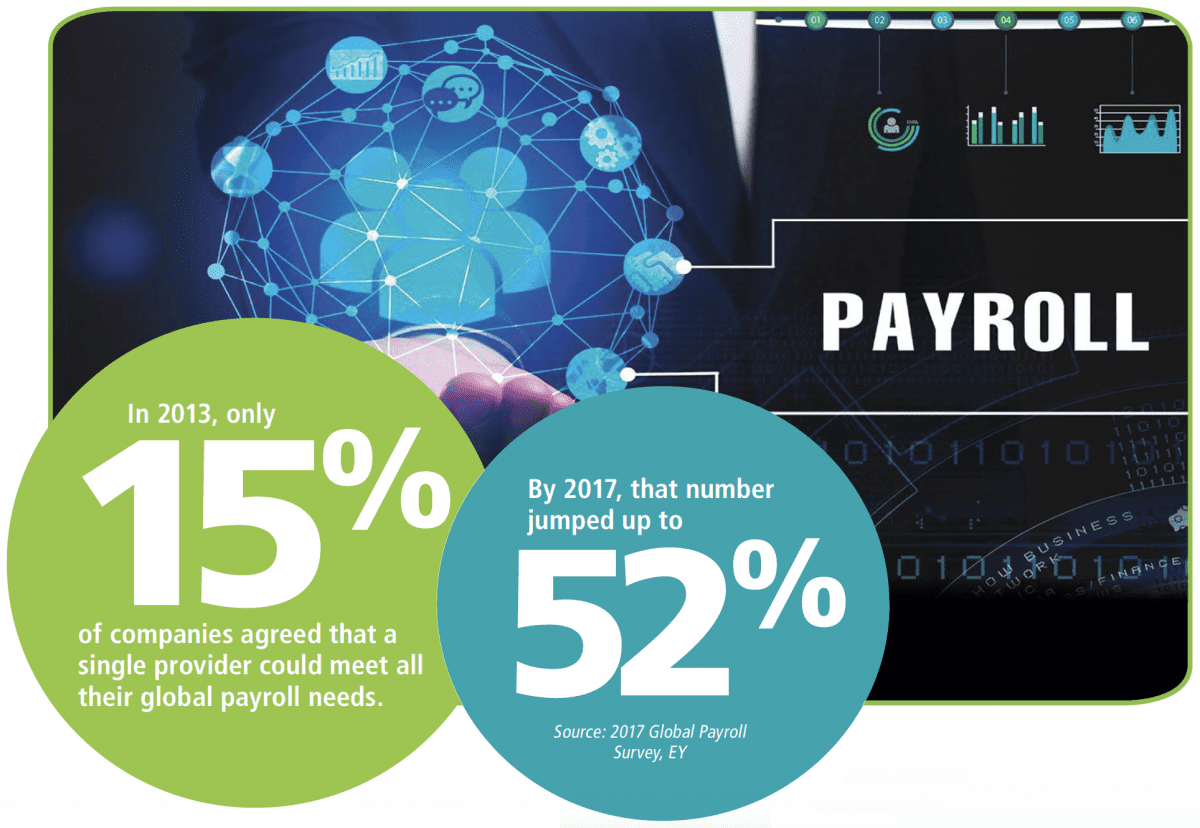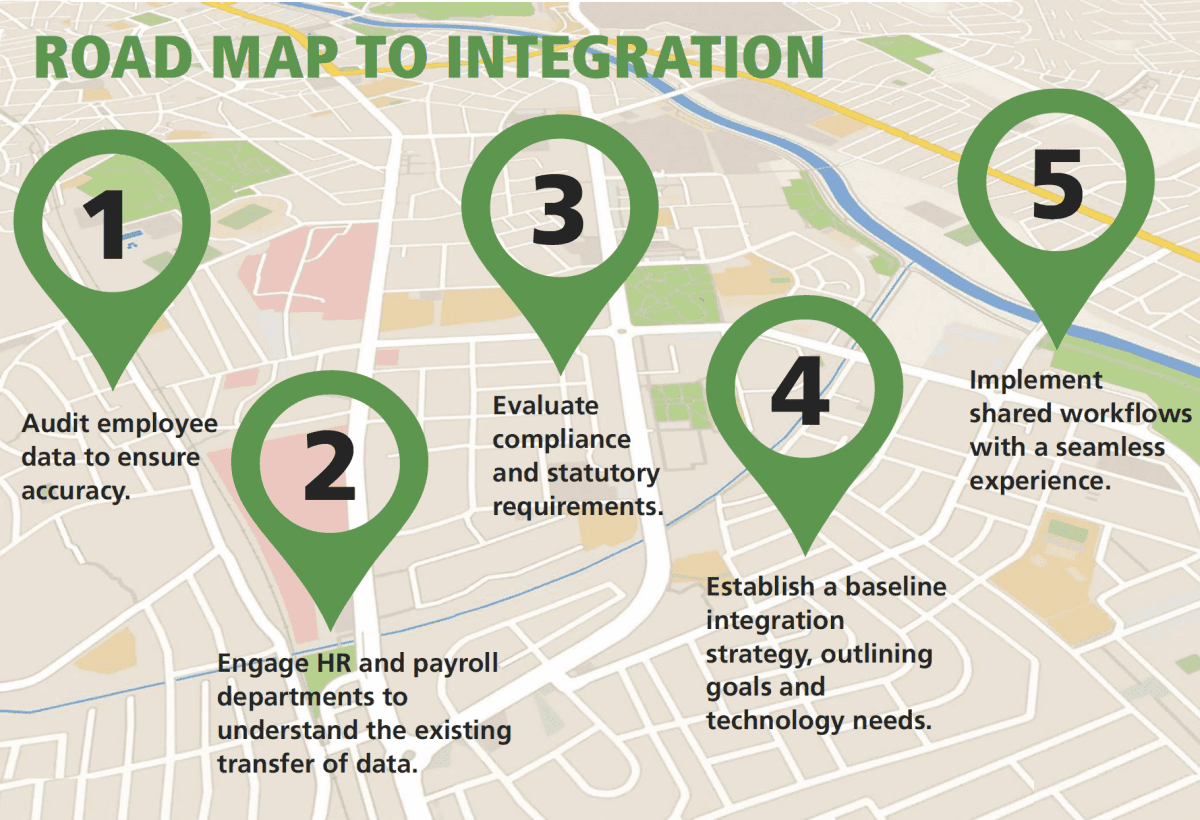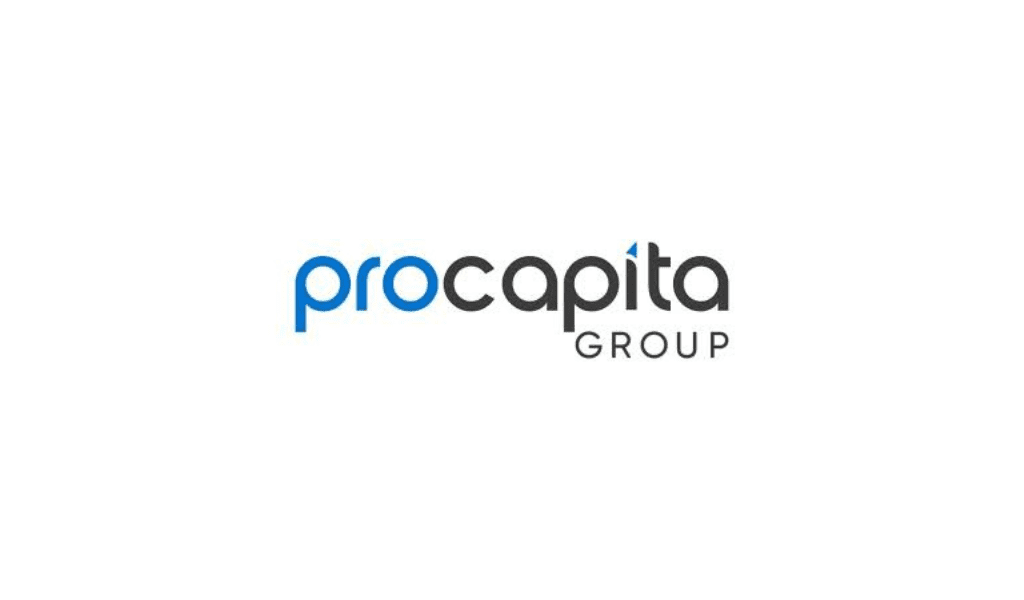Integrating global payroll and HR systems can lead to greater accuracy, better security, and lower costs.
By Judith Lamb
Ask the world’s leading global companies about their greatest asset, and most will respond with “our people.” At the same time, attracting and retaining top talent remains a top concern among executives, according to The Conference Board’s C-Suite Challenge 2019 research. That is why HR departments across the world are trying to enhance the employee experience at every turn. But in doing so, these teams are so focused on serving the day-to-day needs of the workforce that they occasionally overlook otherwise obvious opportunities to improve the function overall. Case in point: payroll.
Making the Business Case
While people are a company’s great asset, they are also usually the highest cost. This begs the question: Why wouldn’t an organization want to understand data from across the employee lifecycle -including payroll? Knowing who is employed and at what rate helps verify and validate each employee’s role in the organization’s broader objectives. Leveraging a shared workflow between payroll and HR enables global organizations to harness powerful analytical opportunities through systems integration. The result is easier access and improved process management, with workflows that support both strategic decision-making and the promise to deliver the correct pay in a timely fashion.
Until recently, the ability to integrate global payroll and HR seemed impossible. There was simply no way to automate and standardize the sheer volume of data processed by these related but disparate departments. Now, due to technological advancements, all of that has changed -and the business world knows it. Back in 2013, when EY asked organizations if a single provider could meet their global payroll needs, only 15 percent of companies agreed. By 2017, the company’s Global Payroll Survey shows that number jumped up to 52 percent, indicating the rapid innovation of the market.
Today, shared workflows between global payroll and HR help promote increased accuracy of information, leading to higher employee engagement and lower costs. With HR as the single source of truth for all employee data, all information flows from a central location. This avoids issues that can arise from trying to maintain two separate tools, including diverging data, duplication, and costly mistakes.
When mistakes happen, the best case outcome presents as a disgruntled employee. At the other end of the spectrum, the worst case is a serious payroll error that may constitute a data privacy breach liable to legal repercussion. In either scenario, without on-time, up-to-date pay, there is little an organization can do to engage and retain its workforce.

Achieving Integration
Without integration, payroll continues to be a manual process requiring back and forth communication between functions as they seek to verify information and share updates. This process puts multinational organizations in a precarious position, particularly as data spills out of secure systems and into emails, spreadsheets, and printed documents. Moving away from this disparate mindset, it becomes possible to see the long-term added benefits of integrating HR and payroll -especially in terms of security, a topic that repeatedly appeared in the most recent Payroll Operations Survey from Deloitte.
Recognizing that payroll plays directly into organizational governance while working as both a primary motivator and de-motivator of people, multinational organizations have plenty of benefits to gain from integrated HR and payroll workflows, particularly at a moment when the technology needed is already available. That said, setting up shared workflows should not be entered into lightly. There will be investments in terms of cost, time, and project management, and success depends on having employee information that is accurate and audited. That serves as the starting point.
Once validation happens, each side needs to dedicate resources to uncover and understand the collection and transfer of data. That includes examining how payroll information gets managed from end-to-end. From here, with compliance and statutory requirements already defined through existing processes, a baseline strategy comes into focus. Milestones and goals take shape, technology needs become clear, and the communication between HR and payroll sees an immediate uptick. Momentum is happening, but there is still work to do -something has to move all of that data.
For global organizations, there will always be country-specific items to consider, such as Spain’s 14-month payment schedule. Without integration, this unique scenario is likely to end up recorded in one system but not the other. Through shared workflows, there is an opportunity to improve such feeds, reconfiguring data points to reduce potential human errors around payroll as well as onboarding, performance management, and offboarding. Allowing for a seamless experience reinforces efficiency without sacrificing precision, ensuring the delivery of the right pay, consistent reporting across countries and regions, and robust analytics that help highlight any areas of concern. In the weeks, months, and years to come, these integrated workflows support a high return on investment, including cost reduction and savings to the organization.
The truth is that from an HR perspective, there is no reason not to combine forces with payroll, using shared workflows to the organization’s global advantage. And yet, NelsonHall found that while most companies are operating on newer cloud systems, only 40 percent of those surveyed have an integration between their HR and payroll solutions in place. By linking the two, the gap closes, mitigating the probability of mistakes. In an era marked by advancement, it becomes possible to do better for both the business and that all-important asset: the workforce.

Judith Lamb is vice president of global HR at CloudPay.














